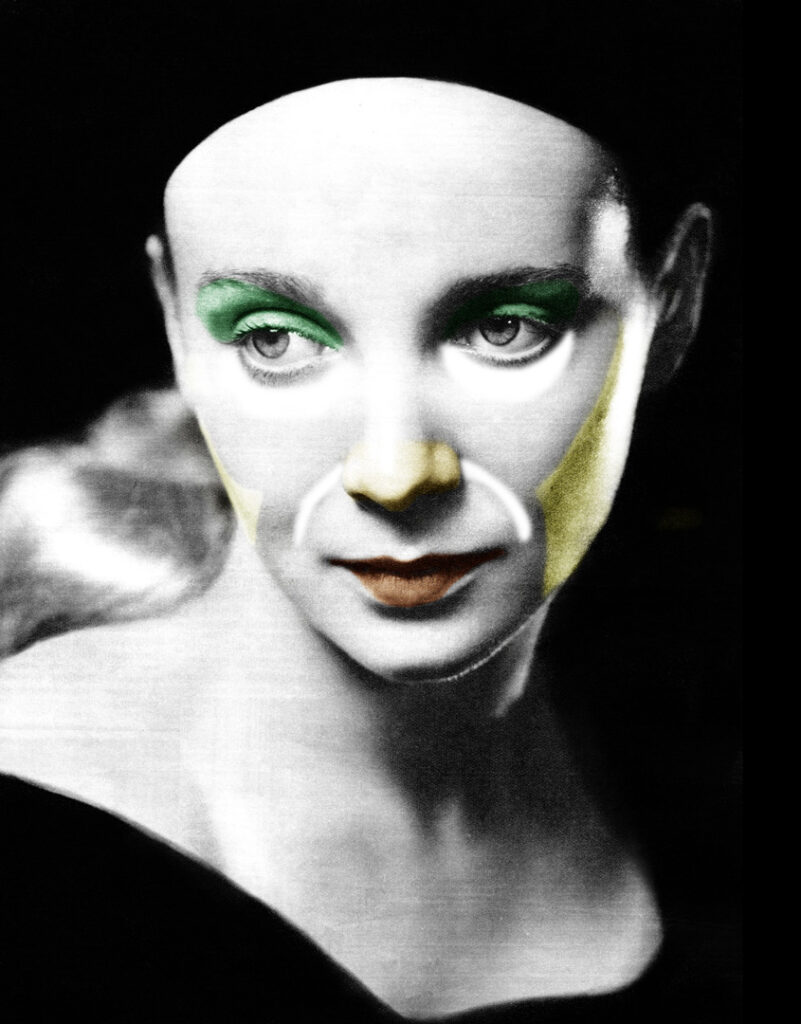HÉLÈNE BELLENGER
FACTORY #1
RIGHT COLOR
Hélène Bellenger collects and diverts magazines, posters and reels from the collection of the Toulouse Cinémathèque. By studying female iconography in the cinema, she aims to deconstruct the objectification of beauty for the screen in the 1920s and 1950s. These key years of the American Star System were a real turning point in the « archetypalization » of representations of the female body. Between divinization and standardization, female iconography curved and shaped itself according to the technological constraints of the early 20th century, creating promiscuity between body and technique, beauty and photogenics. Hélène Bellenger reproduces in post-production the make-up adapted to the cinema and television of the 1920s-1950s. The image technology had a monochrome colour spectrum with few nuances. To emphasise the contrasts and expressiveness of faces, make-up was accentuated to the point of grotesqueness. Max Factor is famous for inventing a facial make-up
that was adapted to the technology of the time and was able to bring out the features on screens. By collecting articles on television and film make-up from the Cinémonde magazines of the 1920s and 1940s, she has brought to the surface the invisible make-up on the screens of the time. The portraits we observe thus seem clownish and disturbing, and question the forces behind the construction of beauty imagery
LA CINÉMATHÈQUE DE TOULOUSE : Founded in 1964, the Cinémathèque de Toulouse is one of the three main French film archives and the second largest film library in France. Supported by the Ministry of Culture and Communication, the Centre national du cinema et de l’image animée (CNC), the City of Toulouse, the Conseil Départemental de la Haute-Garonne and the Region Occitanie, it holds 48,211 inventoried prints, more than 85,000 posters (the largest collection of cinema posters in France), 550,000 photographs, 72,000 press files, 15,000 books on cinema and conducts a policy of restoration and promotion of the film heritage for a wide audience. It is currently chaired by Robert Guédiguian
HÉLÈNE BELLENGER : Born in 1989, Hélène Bellenger is a plastician photographer who lives and workes in Marseille. After a bachelor’s degree in Law and Art History, she specialised in modern art and photography at the Université Paris 1-Panthéon Sorbonne. Graduate of the Ecole Nationale Supérieure de la Photographie of Arles in 2016, Hélène Bellenger collects and makes own images taken from the heart of her spatial, temporal, and digital comtemporaneity, in order to raise questions over their meaning and them waver. Through this work of confiscation and reuse of images, the young artist tends to deconstruct the workings of her contemporary Western visual culture and to question the intermediate space of the « re » of representation. In 2016, her installations were exhibited at Agnès B’s, in Paris. In 2017, she exhibited at the 62nd Salon de Montrouge and at the Galerie Binôme (collective exhibition). In December 2017, she was invited by the Institut Français of Egypt to present her first personal exhibition at the Soma Gallery, in Cairo (Egypt). Winner of the Prix Dior de la Photographie pour Jeunes Talents for the ENSP, she exhibited at the Grande Halle of the Fondation Luma during the Rencontres d’Arles 2018. After a residency in Corsica in the framework of the Ateliers Médicis (2019), she was awarded the Nopoto grant and participated in the refuge residence programme initiated by Envers des pentes, as well as in the Circulation(s) Festival of young European photography, at 104 in Paris. In December 2019, the Fondaria 20.9 gallery in Verona (Italy) opened the artist’s third solo exhibition.

